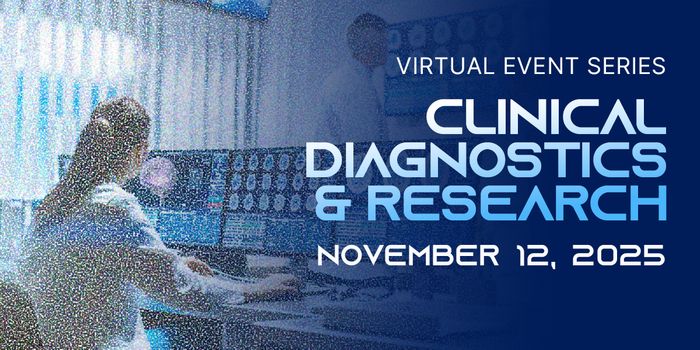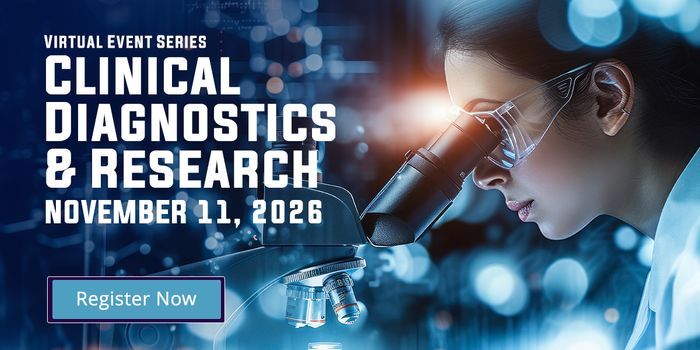Dr. Shaifali Bhalla is Associate Professor of Pharmaceutical Sciences and Associate Dean of Administrative Affairs at Midwestern University College of Pharmacy, Downers Grove, IL. She received her Ph.D. from the University of Illinois at Chicago, USA in 2005. Dr. Bhalla's ...
See more-
Shaifali Bhalla, PhD
-
Audrey Dubourg, MSc, PhD
Audrey is an experienced researcher in microbiology, parasitology with significant experience in molecular biology and 3D mammalian cell culture. As Product Manager, she is responsible for CN Bio's PhysioMimix™ Organ-on-a-chip systems and their implementation in research ...
See more -
Matthew Flegal
Matt entered the research field over 20 years ago as a lab animal technician at the TSI/Mason contract research facility. He has worked at both contract facilities such as TSI and OREAD Biosafety as well in industry at Pharmacia, Pfizer, and Sanofi-Aventis. During that period he ...
See more -
Martin Shaw
Between 1994-2015 he worked at EKF Diagnostics in Wales (formerly Argutus Medical) where he introduced and promoted a wide range of novel kidney and liver tests, including important biomarkers that are now being evaluated by the IMI (Innovative Medicines Initiative) and FDA as ...
See more -
Matthew Shipton
Over the past 16 years, Mr. Shipton has amassed deep domain expertise in cell-based products and services. Currently serving as President of Novabiosis, Inc. Mr. Shipton brings a skill for implementing sales-driven business strategies, an extensive track record of meeting and ...
See more
Drug Discovery & Development Virtual Event Series 2023
Labroots and the Drug Discovery planning committee are pleased to announce its 6th Annual Event in the Drug Discovery & Development Virtual Event Series. Labroots will host this online-only event on February 22, 2023. The Drug Discovery planning committee will invite speakers from industry and academia to discuss key challenges, new opportunities, and recent successes in the current landscape of drug discovery and development.
- Improved Models in Drug Discovery and Preclinical Development
- Emerging Assays
- Organoid Models
- Predicting Safety and Efficacy
- New Methods in PK/PD and Pharmacogenomics
- PGX of GPCRs
- In-vitro Models of Toxicity
- Biomarker Applications in Clinical Development
- Innovations in Biomarkers
- Digital Solutions
- Proteomics
Call for Posters — Virtual poster sessions offer the opportunity to present data to a global audience via a PDF poster and video summary, and discuss results with interested colleagues through email. Plan now to have your poster included in the 2023 Drug Discovery & Development Virtual Event. Submission is free. Submit your abstract here.
Our virtual conference allows you to participate in a global setting with no travel or cost to you. The event will remain open for 2 years from the date of the live event, and the webinars will be available for unlimited on-demand viewing. This virtual conference also offers increased reach for the global drug discovery community with a high degree of interaction through live-streaming video and chat sessions.
Connect with us!
When you attend the event remember to use the hashtag #LRdrug to follow the conversation and connect with other members of the global Drug Discovery & Development community! Follow @DrugDiscoveryLR on Twitter and @DrugDiscoveryandDevelopment on Facebook to connect with our specialist Drug Discovery & Development writers and stay up to date with the latest Trending News in Drug Discovery & Development.
You can now also join our Drug Discovery, Development, & Therapeutics professional networking group on LinkedIn!
Continuing Education
Labroots is approved as a provider of continuing education programs in the clinical laboratory sciences by the ASCLS P.A.C.E. ® Program. By attending this event, you can earn 1 Continuing Education credit per presentation for a maximum of 30 credits.
Labroots is a proud partner of Chati, a virtual event platform that allows for the hosting of engaging and interactive virtual and hybrid events, catering to businesses of any vertical or size.

Agenda Share
-
FEB 22, 2023 12:00 PM PST
Panel Presentation: Authenticated and Reproducible Cell Line 'omics Data
Jonathan Jacobs, PhDSenior Director of Bioinformatics, ATCCTelmo Henriques, PhDScientific Consultant, QIAGEN Digital Insights -
FEB 22, 2023 10:30 AM PST
Using Single B Technology to Develop Lead Antibody Molecules on GPCR Targets with Live Q&A
-
FEB 22, 2023 9:00 AM PST
Get Pipetting Right - Tips and Tricks for Accurate and Reproducible Results with Live Q&A
-
FEB 22, 2023 7:30 AM PST
Keynote Presentation: Molecular Pharmacology Profiling: the Precursor to Preclinical Development
Professor Kevin Pfleger, MA, PhD, FBPhS
Director, Biomedical and Health Innovation, The University of Western Australia and WA Life Sciences Innovation Hub; President, Australasian Society of Clinical and Experimental Pharmacologists and Toxicologists (ASCEPT); Head, Molecular Endocrinology and Pharmacology, Harry Perkins Institute of Medical Research (Centre for Medical Research, The University of Western Australia); Deputy Director & UWA Node Leader, ARC Centre for Personalised Therapeutics TechnologiesBIOGRAPHY -
Avoiding InVivo Study Pitfalls
-
Current Use of GPCR Pharmacogenomics in Clinical Practice
-
Deep Profiling and Spatial Characterization of Tumor Microenvironment (TME) Using Hyperplex Immunofluorescence Assays
Qingyan Sandy Au, PhD, PMP
Principal Scientist, Director of Multiplexing Operations, Pharma Services, NeoGenomics Laboratories, Inc.BIOGRAPHY -
Innovative Biomarker Spatial Analysis for Comprehensive Tissue Immunophenotyping
-
Microplate Reader Detection of a Fluorescent Substrate to Determine Transporter Activity and Identify Novel Inhibitors
Rheaclare Fraser-Spears, PhD
Assistant Professor, Department of Pharmaceutical Sciences, University of the Incarnate Word, Feik School of PharmacyBIOGRAPHY -
Novel Bioassays in Picodroplets for Single-Cell Analysis
-
PDX/PDO models for Precision Cancer Medicine Beyond Mutations
Nhu-An Pham, PhD
Staff Scientist, Princess Margaret Living Biobank, University Health Network, Toronto, ON, CanadaBIOGRAPHY -
Preclinical Evaluation of Marine Natural Products for Neuroscience Drug Discovery
-
The Many Diagnostic Potentials of Human Neutrophil Lipocalin (HNL)
Per Venge, MD PhD
Professor, Department of Medical Sciences, Clinical Chemistry, Uppsala UniversityBIOGRAPHY
- Biomarker Applications in Clinical Development
-
Deep Profiling and Spatial Characterization of Tumor Microenvironment (TME) Using Hyperplex Immunofluorescence Assays
Qingyan Sandy Au, PhD, PMP
Principal Scientist, Director of Multiplexing Operations, Pharma Services, NeoGenomics Laboratories, Inc.BIOGRAPHY -
Innovative Biomarker Spatial Analysis for Comprehensive Tissue Immunophenotyping
-
The Many Diagnostic Potentials of Human Neutrophil Lipocalin (HNL)
Per Venge, MD PhD
Professor, Department of Medical Sciences, Clinical Chemistry, Uppsala UniversityBIOGRAPHY - Improved Models in Drug Discovery and Preclinical Development
-
PDX/PDO models for Precision Cancer Medicine Beyond Mutations
Nhu-An Pham, PhD
Staff Scientist, Princess Margaret Living Biobank, University Health Network, Toronto, ON, CanadaBIOGRAPHY -
Preclinical Evaluation of Marine Natural Products for Neuroscience Drug Discovery
-
Microplate Reader Detection of a Fluorescent Substrate to Determine Transporter Activity and Identify Novel Inhibitors
Rheaclare Fraser-Spears, PhD
Assistant Professor, Department of Pharmaceutical Sciences, University of the Incarnate Word, Feik School of PharmacyBIOGRAPHY -
Novel Bioassays in Picodroplets for Single-Cell Analysis
-
Avoiding InVivo Study Pitfalls
-
FEB 22, 2023 7:30 AM PST
Keynote Presentation: Molecular Pharmacology Profiling: the Precursor to Preclinical Development
Professor Kevin Pfleger, MA, PhD, FBPhS
Director, Biomedical and Health Innovation, The University of Western Australia and WA Life Sciences Innovation Hub; President, Australasian Society of Clinical and Experimental Pharmacologists and Toxicologists (ASCEPT); Head, Molecular Endocrinology and Pharmacology, Harry Perkins Institute of Medical Research (Centre for Medical Research, The University of Western Australia); Deputy Director & UWA Node Leader, ARC Centre for Personalised Therapeutics TechnologiesBIOGRAPHY -
FEB 22, 2023 9:00 AM PST
Get Pipetting Right - Tips and Tricks for Accurate and Reproducible Results with Live Q&A
-
FEB 22, 2023 10:30 AM PST
Using Single B Technology to Develop Lead Antibody Molecules on GPCR Targets with Live Q&A
-
FEB 22, 2023 12:00 PM PST
Panel Presentation: Authenticated and Reproducible Cell Line 'omics Data
Jonathan Jacobs, PhDSenior Director of Bioinformatics, ATCCTelmo Henriques, PhDScientific Consultant, QIAGEN Digital Insights - New Methods in PK/PD and Pharmacogenomics
-
Current Use of GPCR Pharmacogenomics in Clinical Practice
Speakers Share
-
Qingyan Sandy Au, PhD, PMP
Principal Scientist, Director of Multiplexing Operations, Pharma Services, NeoGenomics Laboratories, Inc.
BIOGRAPHY
-
Romina Durigon, PhD
Senior Field Application Scientist, Sphere Fluidics Limited
BIOGRAPHY
-
Matthew Flegal, BS, SRS
Associate Director, Charles River Laboratories
BIOGRAPHY
-
Rheaclare Fraser-Spears, PhD
Assistant Professor, Department of Pharmaceutical Sciences, University of the Incarnate Word, Feik School of Pharmacy
BIOGRAPHY
-
Telmo Henriques, PhD
Scientific Consultant, QIAGEN Digital Insights
BIOGRAPHY
-
Jonathan Jacobs, PhD
Senior Director of Bioinformatics, ATCC
BIOGRAPHY
-
Donghui Ma, PhD
CEO, DIMA Biotechnology LTD
BIOGRAPHY
-
Kirsty McBain
Scientist, BioAnalytics Applications Group at Sartorius
BIOGRAPHY
-
Kate Morgan
Regional Business Manager Lab Essentials EMEA, Sartorius
BIOGRAPHY
-
Professor Kevin Pfleger, MA, PhD, FBPhS
Director, Biomedical and Health Innovation, The University of Western Australia and WA Life Sciences Innovation Hub; President, Australasian Society of Clinical and Experimental Pharmacologists and Toxicologists (ASCEPT); Head, Molecular Endocrinology and Pharmacology, Harry Perkins Institute of Medical Research (Centre for Medical Research, The University of Western Australia); Deputy Director & UWA Node Leader, ARC Centre for Personalised Therapeutics Technologies
BIOGRAPHY
-
Nhu-An Pham, PhD
Staff Scientist, Princess Margaret Living Biobank, University Health Network, Toronto, ON, Canada
BIOGRAPHY
-
Bonnie Phillips, PhD
Senior Manager, Global Field Applications Team, Ultivue
BIOGRAPHY
-
Marsha Pierce, PhD
Assistant Professor, Department of Pharmacology, Midwestern University
BIOGRAPHY
-
Raul Silva
Scientist, CN Bio
BIOGRAPHY
-
Christiana Skarlatopoulou
Scientist, CN-Bio
BIOGRAPHY
-
Helen E. Smith, PhD
Professor, Feik School of Pharmacy, University of the Incarnate Word
BIOGRAPHY
-
Per Venge, MD PhD
Professor, Department of Medical Sciences, Clinical Chemistry, Uppsala University
BIOGRAPHY
-
Sino Biological
Sino Biological, Inc. is a global leader in manufacturing affordable, high-quality reagents, including recombinant proteins, antibodies and cDNA clones-all in-house. We provide a one-stop shop for researchers and pharmaceutical companies around the world, helping our customers ...
See more -
Sartorius
The Sartorius Group is a leading international partner of biopharmaceutical research and the industry. With innovative laboratory instruments and consumables, the Group's Lab Products & Services Division concentrates on serving the needs of laboratories performing research and ...
See more -
OriGene
OriGene Technologies was founded as a research tool company focused on the creation of the large commercial collection of full-length human cDNAs in a standard expression vector. The availability of the complete human genome sequence and the subsequent development of genome-based ...
See more -
DIMA Biotech
DIMA Biotechnology Ltd. is a top biotech company specializing in preclinical research and development solutions for the Biopharma industry. We offer a wide range of pre-designed and validated antibody molecules for early-stage drug development, perfectly tailored to the research ...
See more
Event Series

Drug Discovery & Development Virtual Event Series 2026

Drug Discovery & Development Virtual Event Series 2025

Drug Discovery & Development Virtual Event Series 2024

Drug Discovery & Development Virtual Event Series 2022

Drug Discovery & Development Virtual Event Series 2021

Drug Discovery & Development Virtual Event Series 2020

Drug Discovery Virtual Event Series 2019




































































